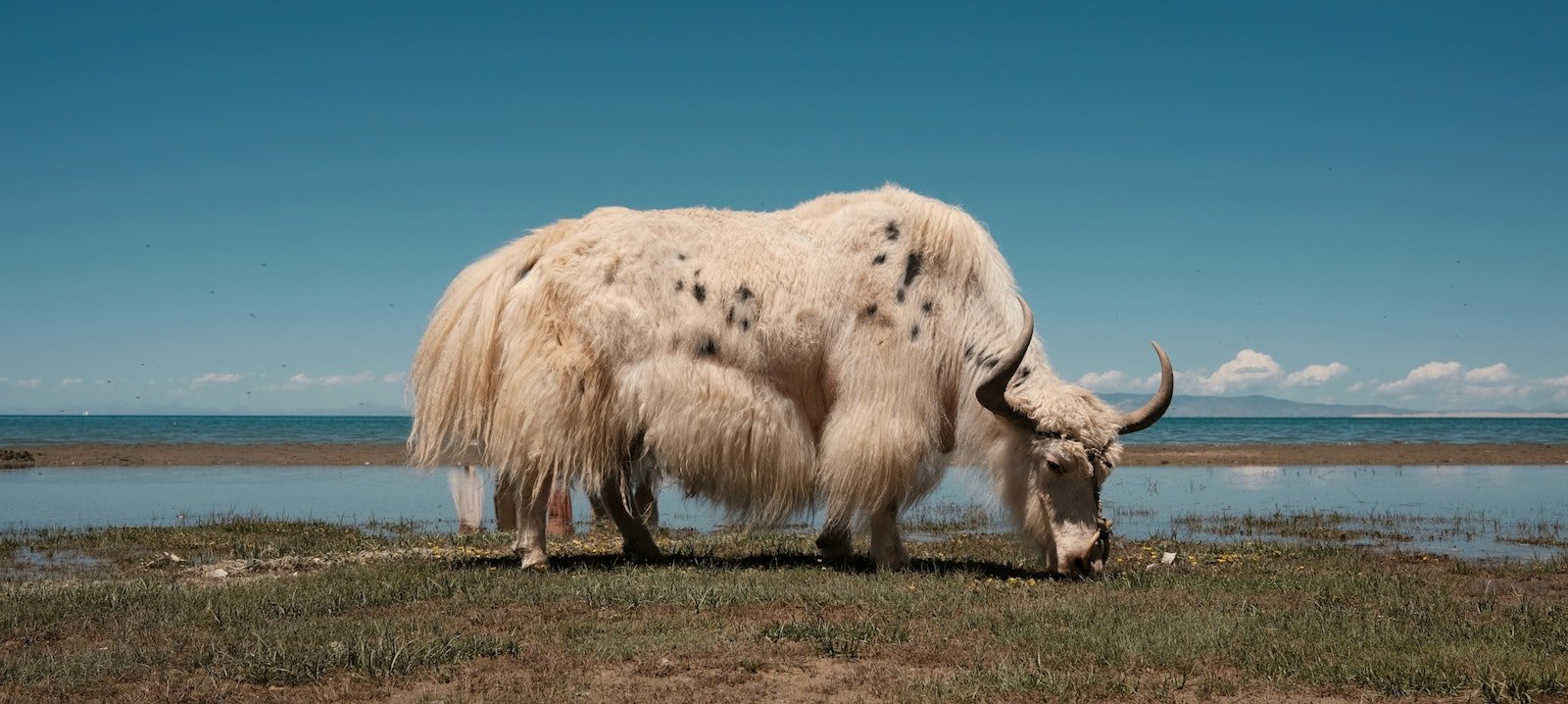One afternoon last summer, I was riding my bicycle along the back roads near our office in Northern Colorado. I’d turned east, onto the plains and away from the mountains . . . and on that day, straight into a headwind. The winds from the east typically carry the distinctive aroma of cattle, and the ride had turned into a slog when I turned the corner and saw a field with black and white bovines.
But they weren’t cows. They were yaks. In a green field, with lush coats, grazing and swishing long, plumy tails.
The rest of the ride was a delight. Yaks!
Yak is one of the most affordable luxury fibers available to spinners. Cashmere, qiviut, and paco-vicuña will all set you back quite a bit. They’re worth it, but for spinners on a budget in need of some softness, yak is hard to beat. The yak fiber that we spin is a down fiber, the soft, fine coat that keeps animals warm when nestled in among the long, coarse guard hairs.
A few years ago, I went to visit Carl and Eileen Koop of Bijou Basin Ranch, also located on the plains of Colorado. As we stood next to the field talking, a yak came up to see if we were bearing grain. I could see that tufts of black down were coming loose from the sleeker coat, and Carl explained that the yaks can be combed to remove the down. I wasn’t eager to climb in the pen with an animal so big, but I seeing how soft their fiber was, it was actually a little tempting.
Yaks are multipurpose animals. Domesticated in the Himalayas, they were used for meat, milk, fiber, and labor, truly multi-purpose. They are mostly black, cream, or a blend of the two, though there are some brown or golden yaks. They are close relatives of cattle, though instead of the signature mooing of cattle, they grunt!
It’s too cold to go biking past fields of yaks today, though, so I’ll sit down at another kind of wheel and start spinning yak fiber instead.
— Anne Merrow

